Building of the Day: 1095 Prospect Place, an Unusual Apartment House
Brooklyn, one building at a time. Name: Apartment house Address: 1095 Prospect Place Cross Streets: Kingston and Albany avenues Neighborhood: Crown Heights North Year Built: 1908 Architectural Style: Arts & Crafts with Tudor Revival details Architect: Jack Z. Cohen Other Buildings by Architect: Small projects in Queens, the Bronx, Manhattan and Brooklyn Landmarked: Yes, part…
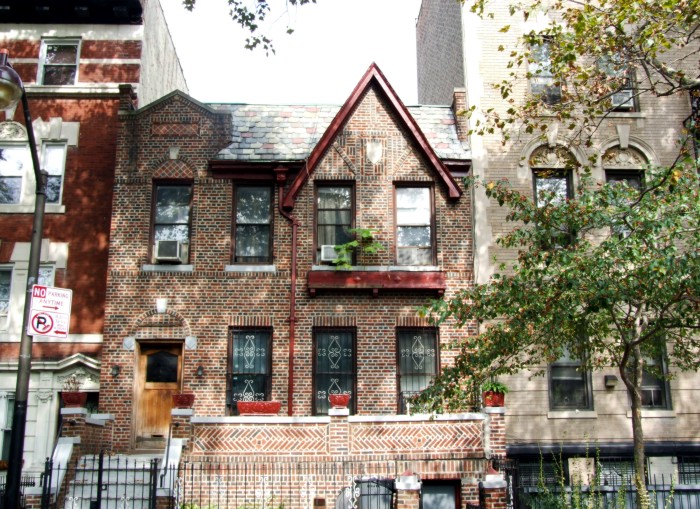

Brooklyn, one building at a time.
Name: Apartment house
Address: 1095 Prospect Place
Cross Streets: Kingston and Albany avenues
Neighborhood: Crown Heights North
Year Built: 1908
Architectural Style: Arts & Crafts with Tudor Revival details
Architect: Jack Z. Cohen
Other Buildings by Architect: Small projects in Queens, the Bronx, Manhattan and Brooklyn
Landmarked: Yes, part of new Phase III of Crown Heights North Historic District (2015)
The story: One of the many great things about the architecture of Crown Heights is the diversity of styles and functions. Because the large neighborhood developed from the 1850s through the 1940s, the gamut of residential architecture in Brooklyn is represented somewhere in the neighborhood.
Crown Heights South is very different from Crown Heights North, which is the older part of the neighborhood. Within CHN are many different housing options, but this building is one of a kind, at least within the historic districts.
Crown Heights North has single family row houses, two family row houses, several styles of the “Kinkos” double duplex row houses, and all kinds of flats buildings, tenements and elevator apartment buildings. And this place – an apartment HOUSE.
This unique building is hiding a lot behind a suburban-style Arts & Crafts façade. From the street, this appears to be a single suburban house tucked into a street filled with row houses and a couple of small apartment buildings.
But it is actually a four family apartment building. The footprint of the house stretches far back into the lot, and this little cottage is actually 25 feet wide and 90 feet long. The apartments in here were not small, either.
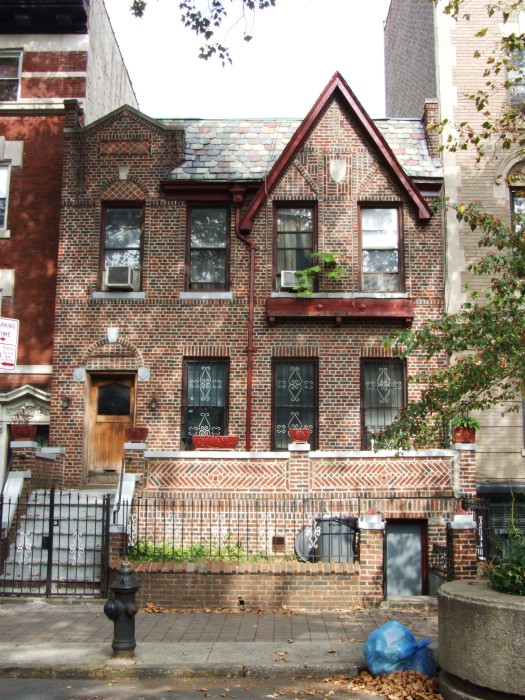
The building was designed by an architect named Jack Z. Cohen in 1908. Mr. Cohen maintained an office at 50 Court Street, downtown. There’s not a whole lot of information about him available. He’s a contributing architect in the Jackson Heights Historic District, with a group of stores within the district designed in 1927-28.
The bulk of his work seems to bread and butter projects, including several garages in Manhattan and the Bronx. He’s on record as the architect of alterations to a couple of powerhouses in Brooklyn, in 1943. He designed a group of one story stores on Rockaway Avenue, very late in his career, in 1951.
This house appears to be early in his career, and is rather good. I’m sure more extensive research into other areas of the city would reveal much more of this work, the bulk of it probably in Queens and in the more suburban areas of Brooklyn.
This house is unique on the block and unique in the area, but it works because of the neighborhood’s eclectic nature. Only a couple of blocks away are a group of white Arts & Crafts cottages, Tudor-style apartment buildings, and the Medieval –style Kinkos houses on Brooklyn Avenue and Sterling Place. This house is was built soon after the Kinkos houses and well before the white cottages or the apartment buildings, but 100 years later, it all works.
Here we have attractive herringbone brick walls, diamond and basket weave patterns in varying colors, window boxes, decorative nailheads, and a false pitched roof with original slate tiles. Great stuff!
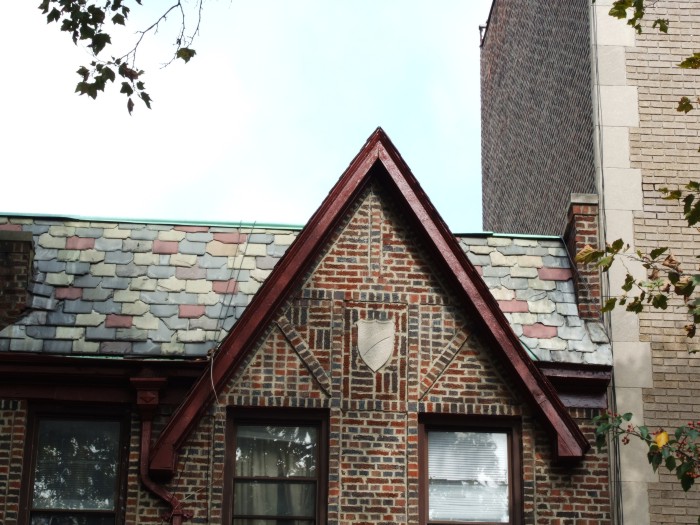
These apartments were luxury, not economy. According to ads in the Eagle, they were four, six, and seven rooms. At least some of them had maid’s rooms, and even as late as 1936, there were ads in the paper for a live-in housekeeper. The ads of the day were very specific, and would be totally illegal today, specifying employment help by race, religion, national origin, and in this case, skin tone.


In 1923, Elizabeth and Anna Ilgen ran a music school from their apartment. They taught piano, voice and sight reading. In 1952, Teddy’s Dance Studio, also in this building, taught tap, ballet and acrobatic dance here. I’m sure that was not appreciated by the other tenants, depending on where he was in the building.
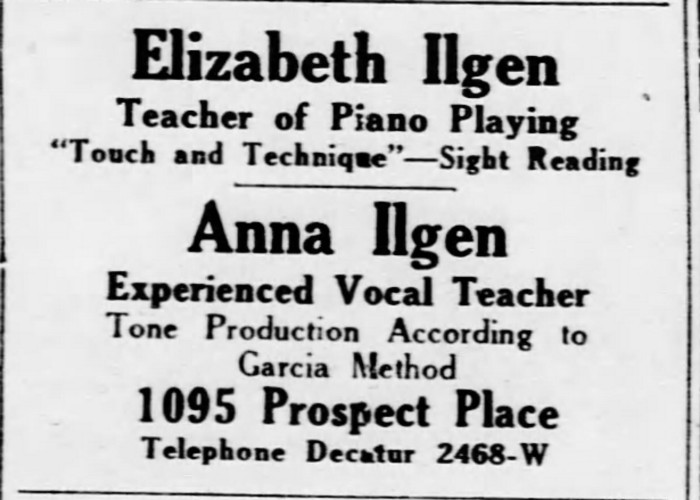

War and bravery also figure into the history of this building. In 1918, during World War I, Harvey Carter, who lived at this address with his mother, was a sailor on the President Lincoln. The ship was torpedoed by the Germans and sank rapidly. Over 600 sailors made it to the lifeboats or into the water. Yeoman First Class Carter had been knocked out by the blast, but made it into the water, where he was able to swim to a life raft. He and six others clung to the raft for eight hours until they were picked up by a life boat.

The boats were out on the water for another four hours before help arrived. During that time, Carter said that the German U-boat surfaced amidst the life boats. The German sailors did not fire on them, but taunted them and laughed at their predicament before going under and disappearing.
Carter and other survivors also told authorities that as their transport ship was sinking, the captain, still on the ship, ordered a final volley, and as the ship’s flag sank into the water, they all sang the National Anthem. It was the most moving moment of his life, he told the Eagle.

Another brave man also lived here, much later, in 1949. He was John Lyden, 52, a member of Engine Company 240, FDNY. He had been a 20-year veteran of the Fire Department, and died of smoke inhalation fighting a fire in a group of stores in Flatbush.
His requiem mass was in nearby St. Gregory the Great Catholic Church, and his passing was honored with a full Fire Department funeral, with participants from many different houses, bagpipes and honor guard. He left behind his wife, his mother and a niece.
Today, the building is still in great shape, and is still four apartments. This little gem is one of several hundred buildings just landmarked a few weeks ago, as Phase III of the Crown Heights North Historic District.
Top photo by Suzanne Spellen
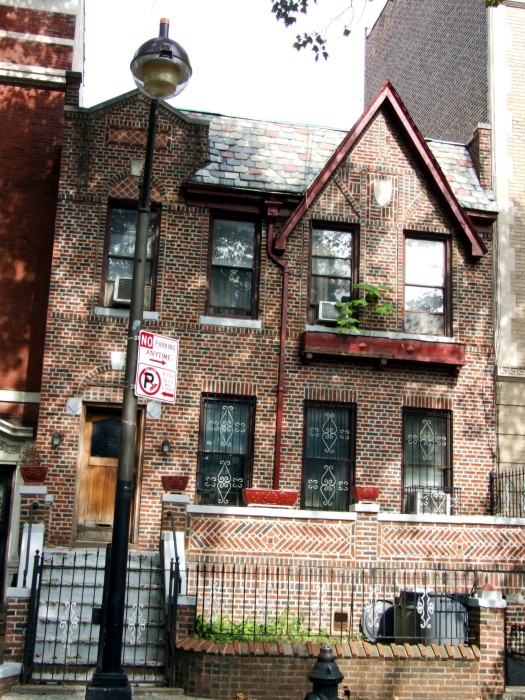









What's Your Take? Leave a Comment